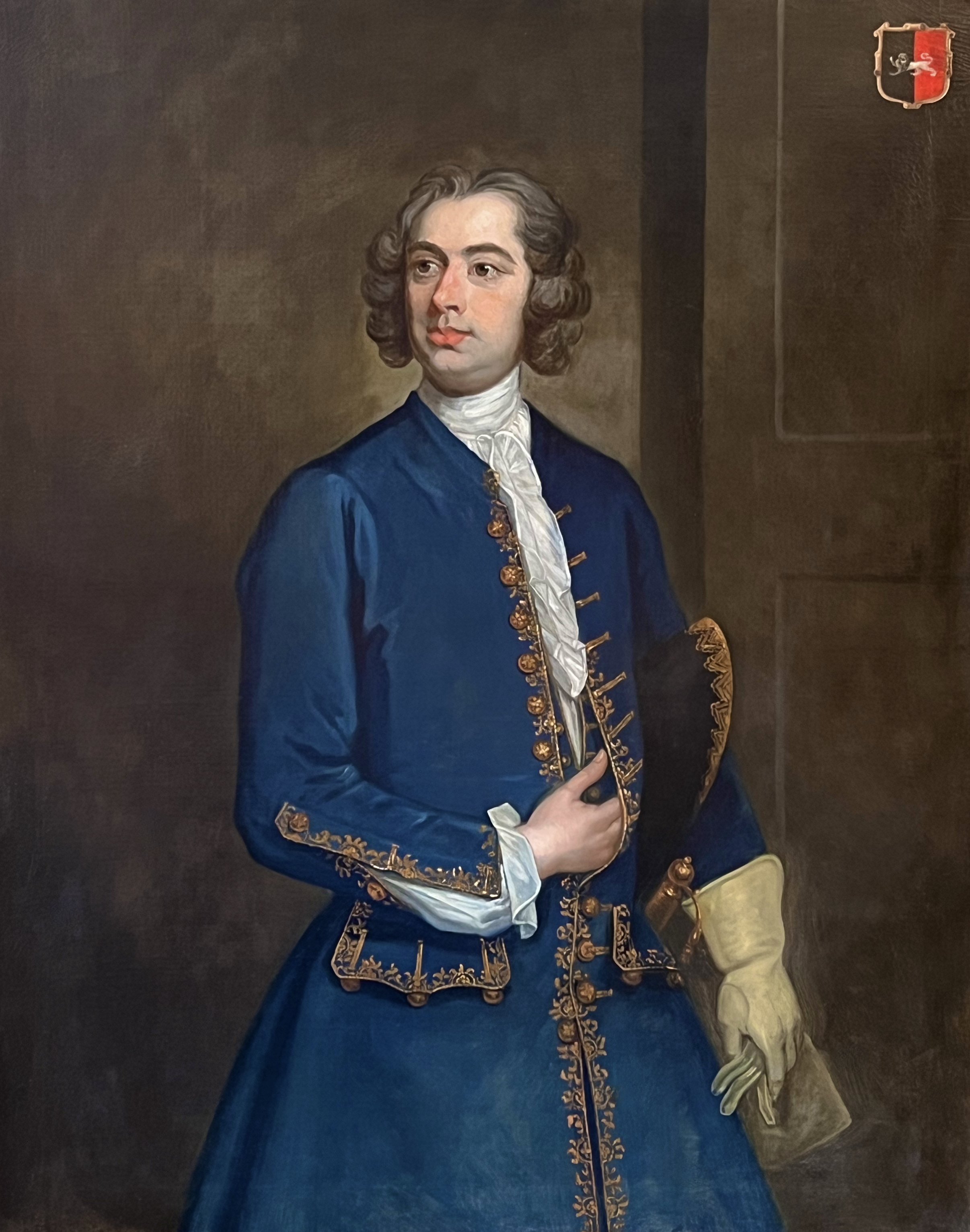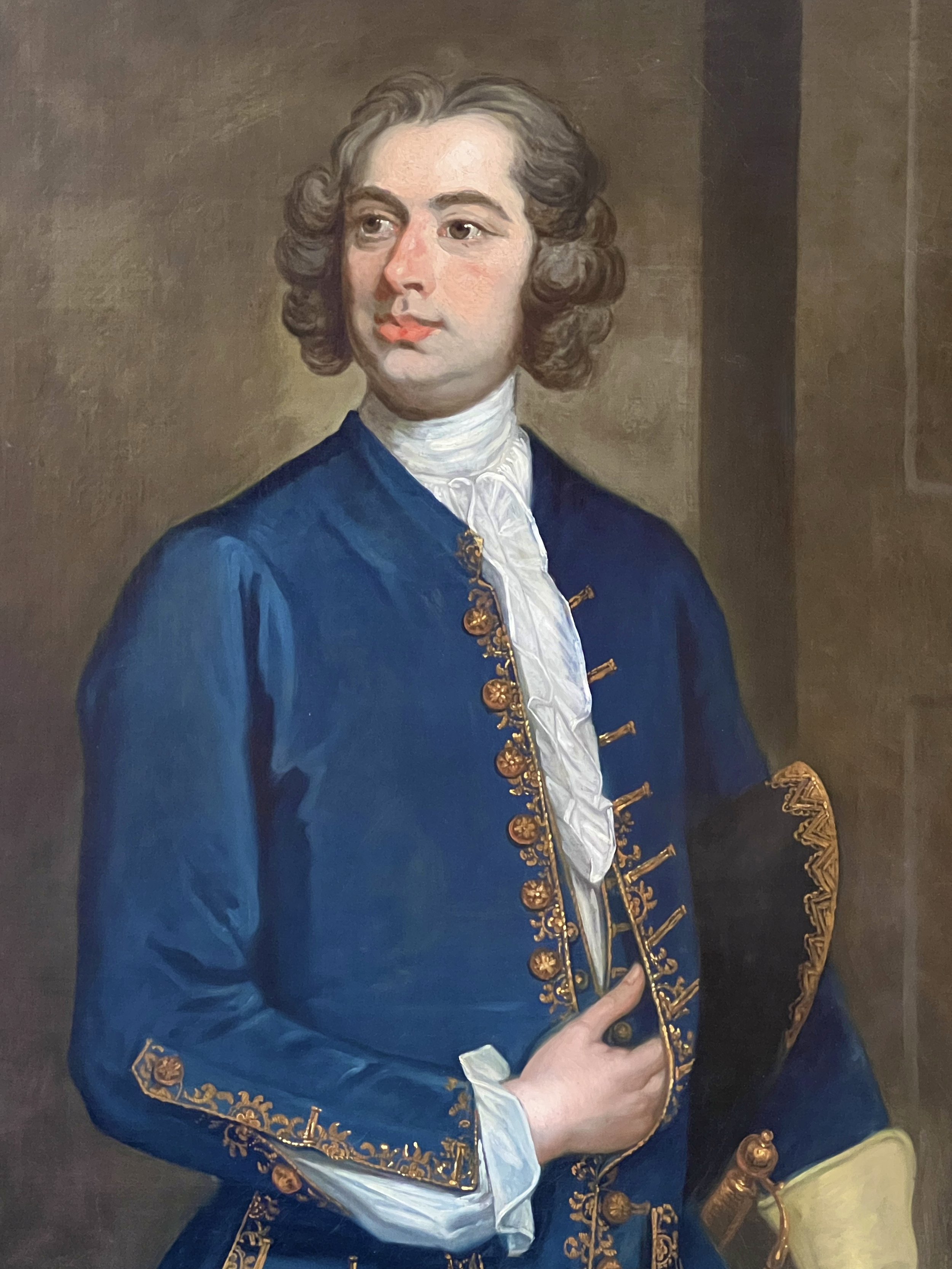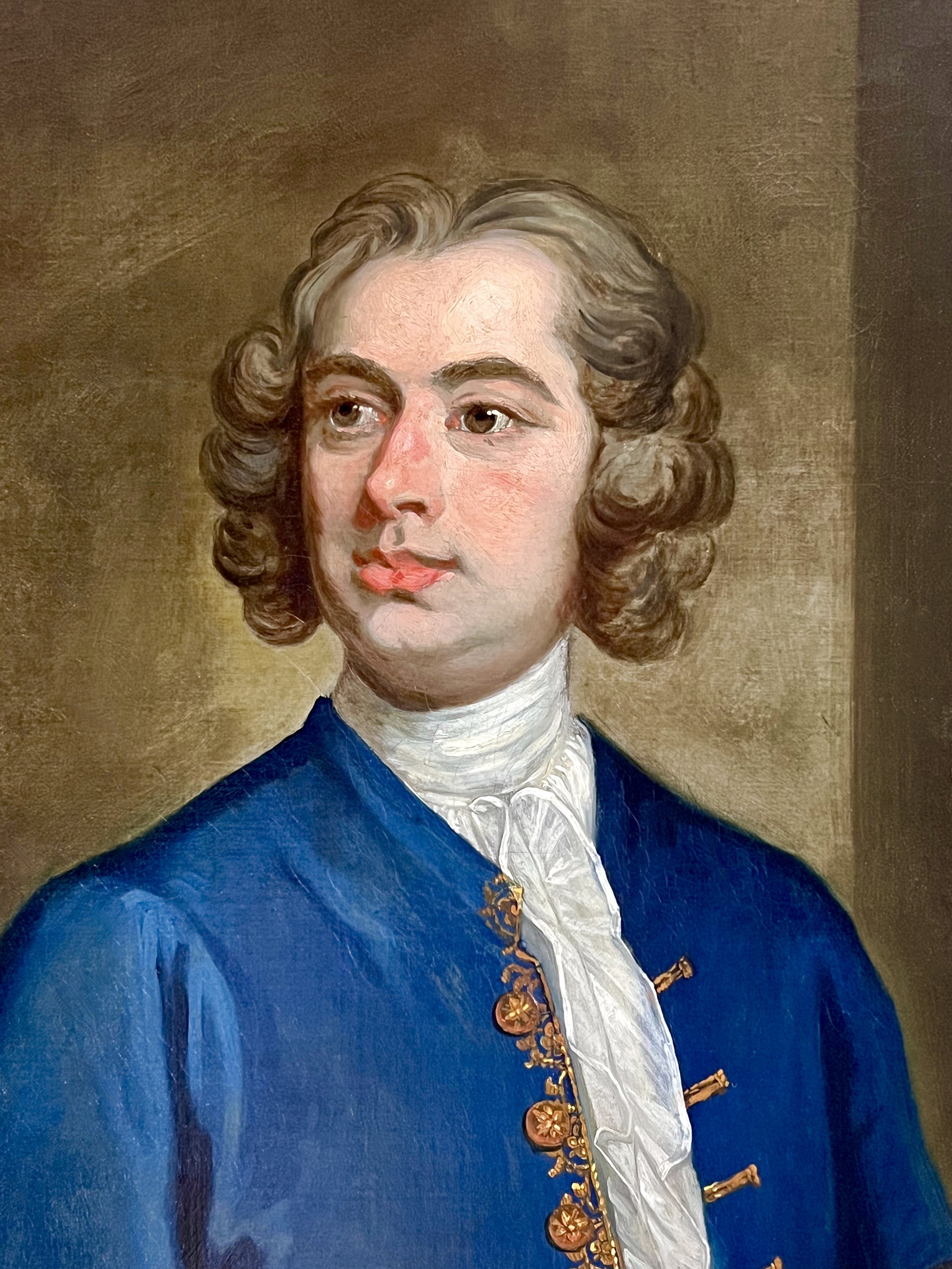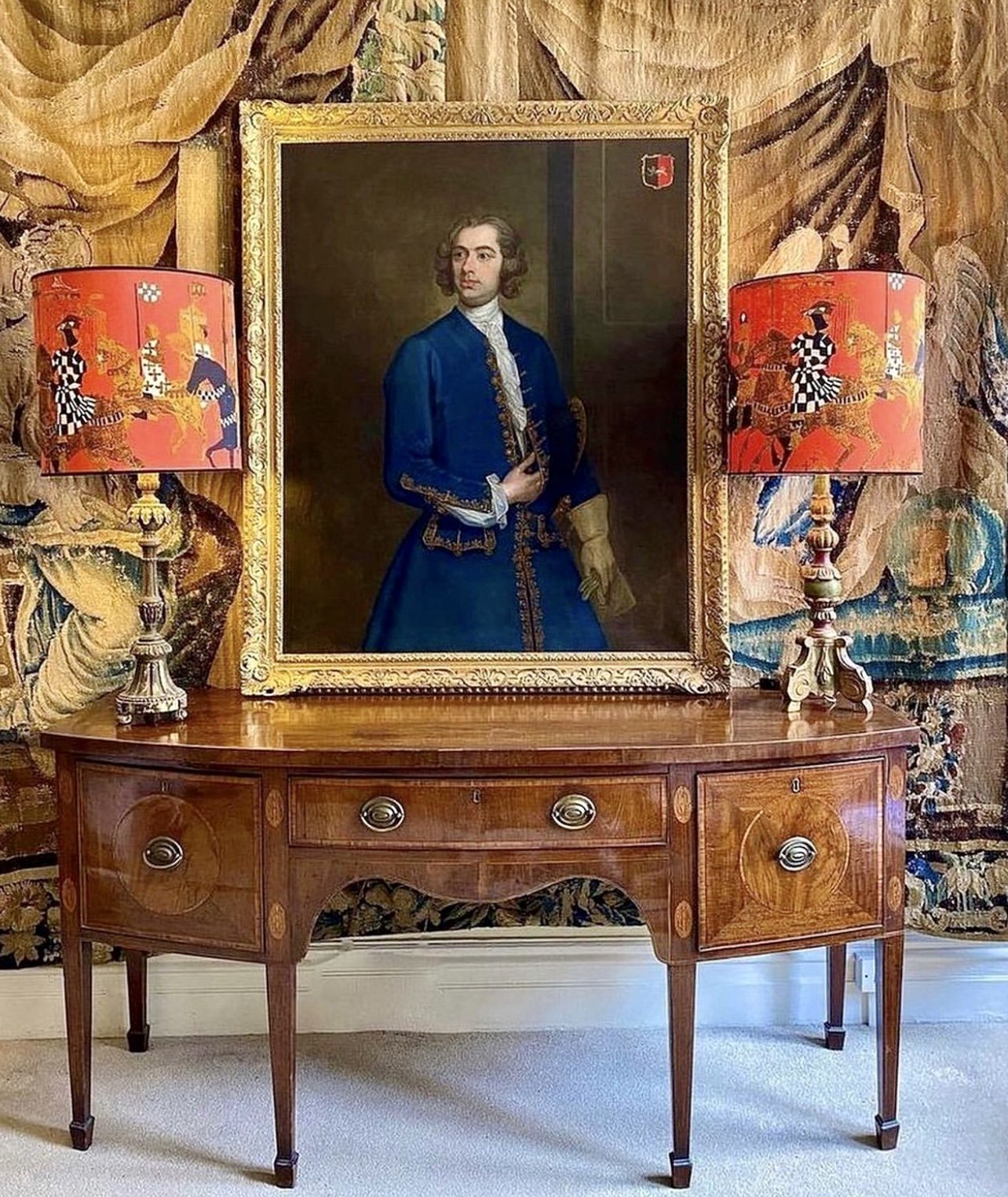





PORTRAIT OF JOHN NEALE OF ALLESLEY PARK c.1730 - CIRCLE OF WILLIAM HOGARTH.
This elegant portrait captures the likeness of John Neale (1687-1746) of Allesley Park, Warwickshire, and Cherington Park, Gloucestershire. Descending from a family who had supported Cromwell and the Parliamentarian cause during the English Civil Wars, both grandfather, father and son served as MPs for various constituencies in the Midlands during the seventeenth and eighteenth centuries. Allesley Park, located on the outskirts of Coventry, had been the Neale’s family seat since the 1692 when bought by John’s father Henry in a bid to expand the family’s political control of this prosperous area of the West Midlands. Our subject’s education began at Pembroke College Oxford and afterwards he was admitted at Middle Temple in 1705. John Neale eventually went on to serve as Coventry’s MP at various points between the years 1722 and 1741.
Despite his political connections to this city, Neale eventually bought the ancient Manor of Cherington in Gloucestershire in 1727. Three years after the purchasing of this manor he married Princess Caroline’s dresser Frances Pope in 1730, the daughter of a Shropshire landowner with whom he had three daughters. It was probably Frances’s connections at Court that landed Neale the job of Comptroller to the Princess of Wales’s Household, a significant position that might have warranted the creation of such a portrait. In 1740 he is recorded to have replaced the medieval buildings in the area with a new structure, rechristening the site Cherington Park. The building survives to this day, yet, has been radically altered since.
The sitter’s elaborate costume too is of the highest quality, which compliments the stone hall setting in which he stands. Consisting of a long deep blue frockcoat, decorated with golden buttons and thread, Neale is captured in a moment of relative ease. The way he carries his tricorn underneath one arm, whilst removing one of his gloves, almost suggests a recent return from the outdoors. The gilded court sword, the accoutrement of any worthy gentleman during this period, is visible hanging from his hip. The painting’s tone and composition exudes a quiet confidence. The inclusion of his family’s coat of arms might have been suggestive of his ambitions to elevate his family’s position, a proposition made quite possible due to his position at court.
The quality of brushwork found in Neale’s face is outstanding, and only compliments the interest of the picture. Furthermore, recent and careful conservation of this work, undertaken on behalf of Period Portraits, has revealed its true quality and remarkable state of preservation. The painting of the sitter’s facial features is undertaken with a vibrant and painterly and confident approach. This exciting and expressive technique stands in contrast with the smoother and often more perfunctory style promoted by the likes of fashionable contemporaries such as Thomas Hudson during this period. This rough manner, where the quick and nervous brushstrokes are visible, echoes the style of painting made prominent in Britain by artist Sir Godfrey Kneller at the end of the previous century. This is particularly noticeable in the way the ground and halftones of bluey grey are prepared before vibrant flesh-tones are painted on top. This achieves a remarkable depth and sense of character, which is paramount to creating a living and breathing portrait. Kneller, after all, had undoubtedly learnt this technique whilst working in the studio of Dutch painters Ferdinand Bol and possibly even Rembrandt, true masters of this rough and expressive manner of painting.
Despite concerted efforts, it has not been possible to identify the creator of this particular portrait. Although, we can be sure that this brush must has been employed by a true master of paint. Comparisons might be made to several paintings by William Hogarth, whose skill with thick impasto is particularly seen in his Self Portrait of c.1735 in the Yale Center for British Art. In this case, Hogarth’s painterly manner was something of an exception during the rise of the polished and smooth classical style made popular during the first half of the eighteenth century in British portraits. Hogarth’s particular ability to manipulate paint in order to capture not only the likeness but character of his sitter’s made his portraits amongst some of the most iconic produced the eighteenth century.
This painting is offered in its original, fine quality, hand carved and gilded 18th century frame.
Canvas: 50" x 40”, 120cm x 102cm.
Framed: 57”x 47'“, 145cm x 119.5cm.
Internal Ref: 00086
Price: £15,250

